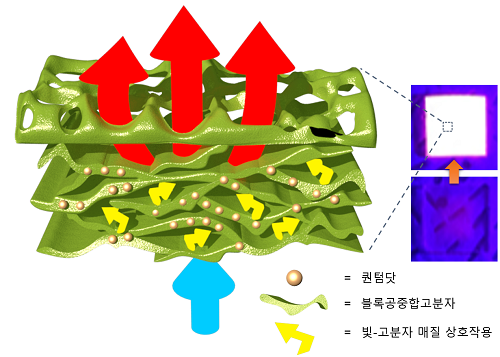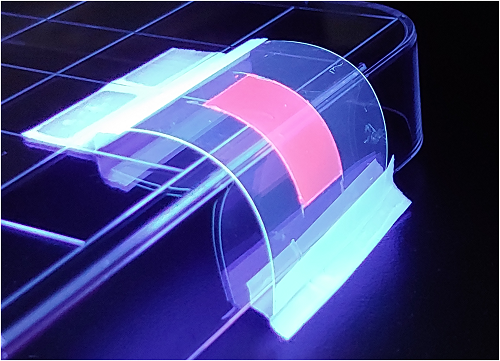A research team of The Korea Advanced Institute of Science and Technology (KAIST) developed a new light-emitting material which combines quantum dot with a polymer medium filled with popcorn-like air bag. The new material, compared to conventional pure quantum dot films, perform 21 times better luminous intensity and 45% better durability.

(Image: KAIST)
The study was published online in September on Nano Letters, titles “Order-of-Magnitude, Broadband-Enhanced Light Emission from Quantum Dots Assembled in Multiscale Phase-Separated Block Copolymers.”
Quantum dot has been applied in display but pure quantum dot film has low light efficiency due to interruption between adjacent quantum dots and poor light absorption and light extraction rate.
To solve the problem, the team coated the block copolymer polymer in a controlled humidity environment to finely separate the polymer and water particles. The process enables a material in which quantum dots are evenly arranged in a fine pore structure formed by rapidly evaporating moisture. This is similar to the principle that when the corn is heated, the moisture inside the water expands and escapes into water vapor, forming a hollow popcorn structure.
The technique maximizes the interaction between light and the polymer medium, increasing the light absorption and light extraction rate of the quantum dot by 4-5 times, respectively. In addition, the block copolymer polymer forms a nanoscale (nm) -sized phase-separated structure within itself to evenly disperse the quantum dot particles, thereby significantly reducing the emission intensity due to the interaction between the quantum dots.

(Image: KAIST)
When applied to blue LED, the material can boost luminous intensity by 7 times and the durability increased by 45% compared to pure quantum dot. The team expect to apply the material to Micro LED display to enhance production efficiency. The research team said that the technology can help to improve cost competitiveness for Micro LED display production as it can realize excellent light emission characteristics.
According to KAIST, the technology has been registered for a patent in South Korea and is under examination in the U.S. and other countries.













